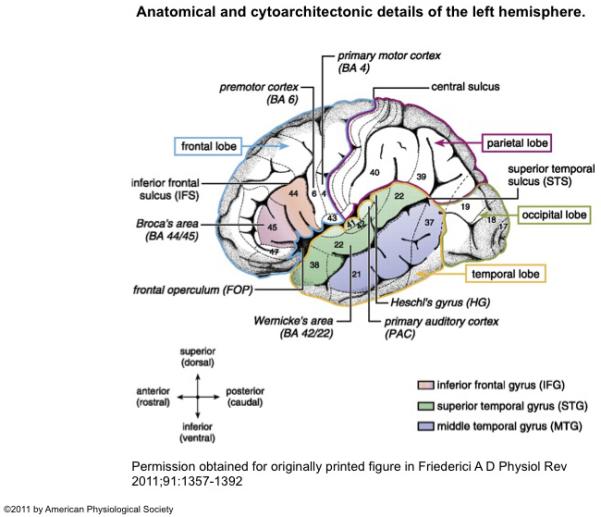Figure 3.

Brain structural abnormalities are linked to cognitive deficits in epilepsy. a) Reduced gray matter thickness in left MTLE. The color maps denote mean percent reduction in cortical thickness as a percentage of control average. Red areas in the bilateral frontal poles, frontal operculum, orbitalfrontal, lateral temporal and occipital regions, and the right angular gyrus and sensorimotor cortex denote up to 30% reduction in thickness. b) Whole brain diffusion tensor imaging reveals reduced fractional anisotropy (FA) in the anterior temporal lobe, mesial temporal lobe and cerebellum ipsilateral, as well as frontoparietal lobe contralateral to the side of seizure onset in TLE. FA is positively correlated with delayed memory scores in the anterior temporal lobe and with immediate memory scores in the mesial temporal lobe. c) Shape analysis shows that the caudate head is selectively atrophied bilaterally in left TLE. Caudate volumes are negatively correlated with Wisconsin Card Sorting Test perseverative errors. d) Bilateral ventral dorsal putamen hypertrophy is evident in children with new onset RE. Putamen volumes are positively correlated with Delis-Kaplan Executive Function System card sorting scores. Abbreviations: MTLE, mesial temporal lobe epilepsy; TLE, temporal lobe epilepsy; RE, Rolandic epilepsy.
